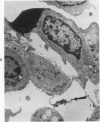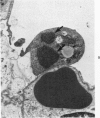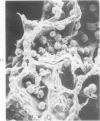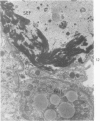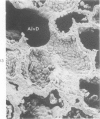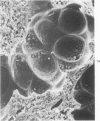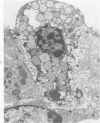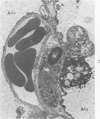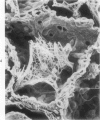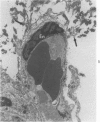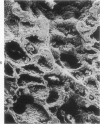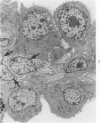Abstract
The ultrastructural morphogenesis of pulmonary lesions was studied in cats exposed to either aerosols of feline calicivirus (FCV) or high concentrations of NO2. Both directly injured alveolar lining cells, particularly type I cells. Necrosis of pneumocytes attended by an acute exudative response in the air exchange tissues was evident from 0 through 24 hours after exposure of cats to NO2 and from 12 through 96 hours after infection with FCV. The reparative process following alveolar injury was characterized by regenerative hyperplasia of type II pneumocytes, proliferation of stromal cells, and infiltration of mononuclear cells. Differences in the lesions produced by NO2 and FCV also were encountered. Endothelial necrosis was detected only after NO2 injury, whereas a marked infiltration of neutrophils and immunocytes was observed only after FCV injury. The FCV/NO2 experimental system in cats is well suited for studies of diffuse alveolar damage of toxic and viral etiology.
Full text
PDF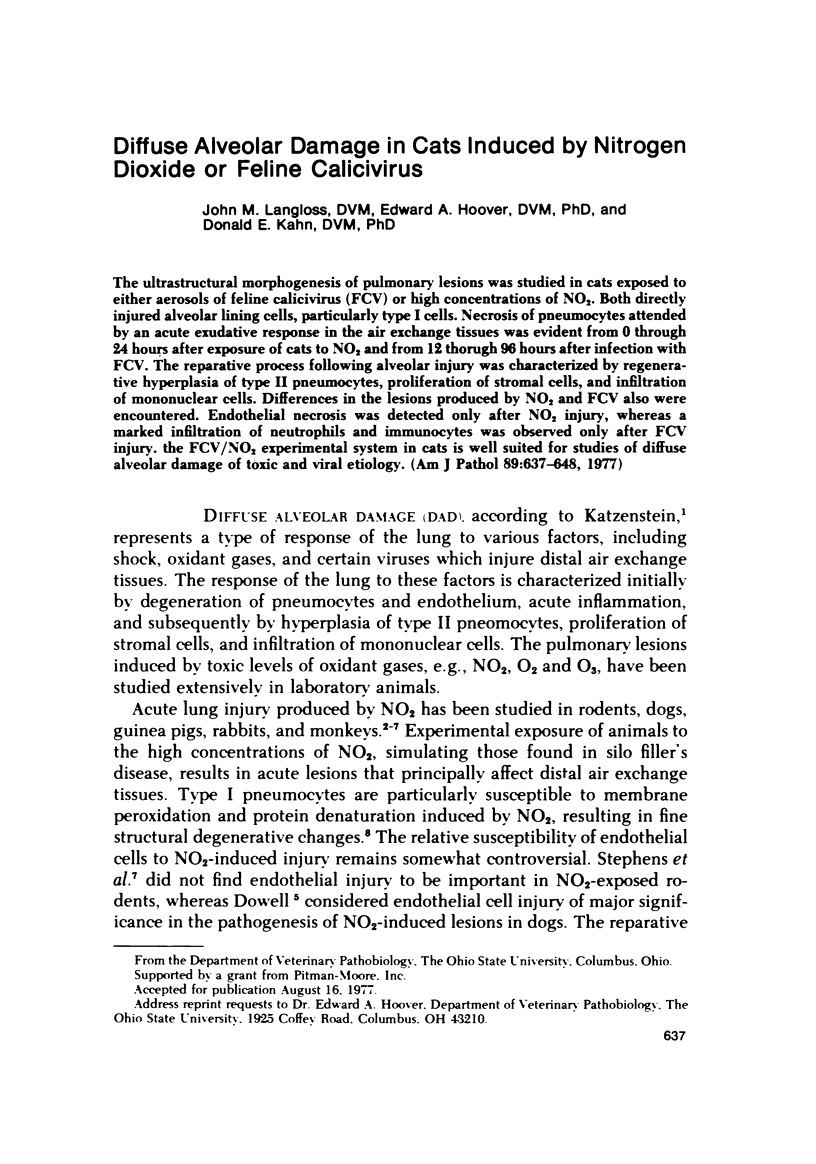
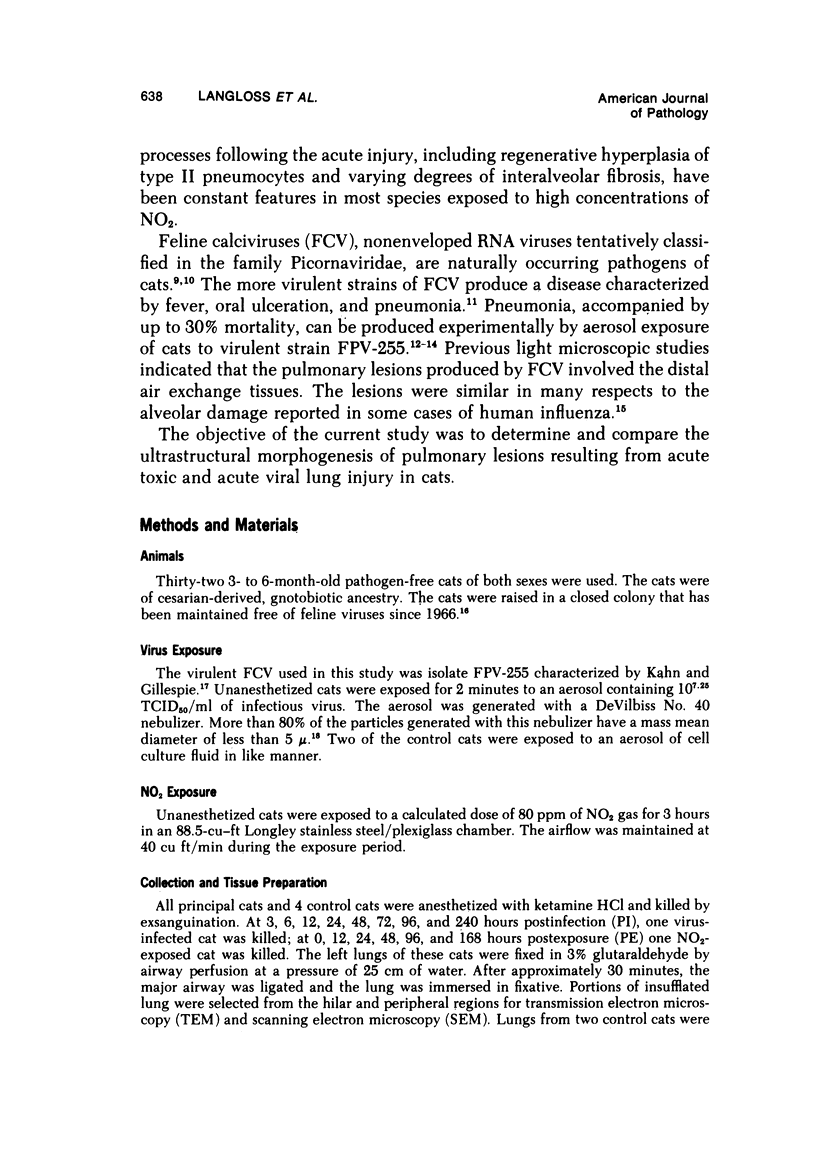
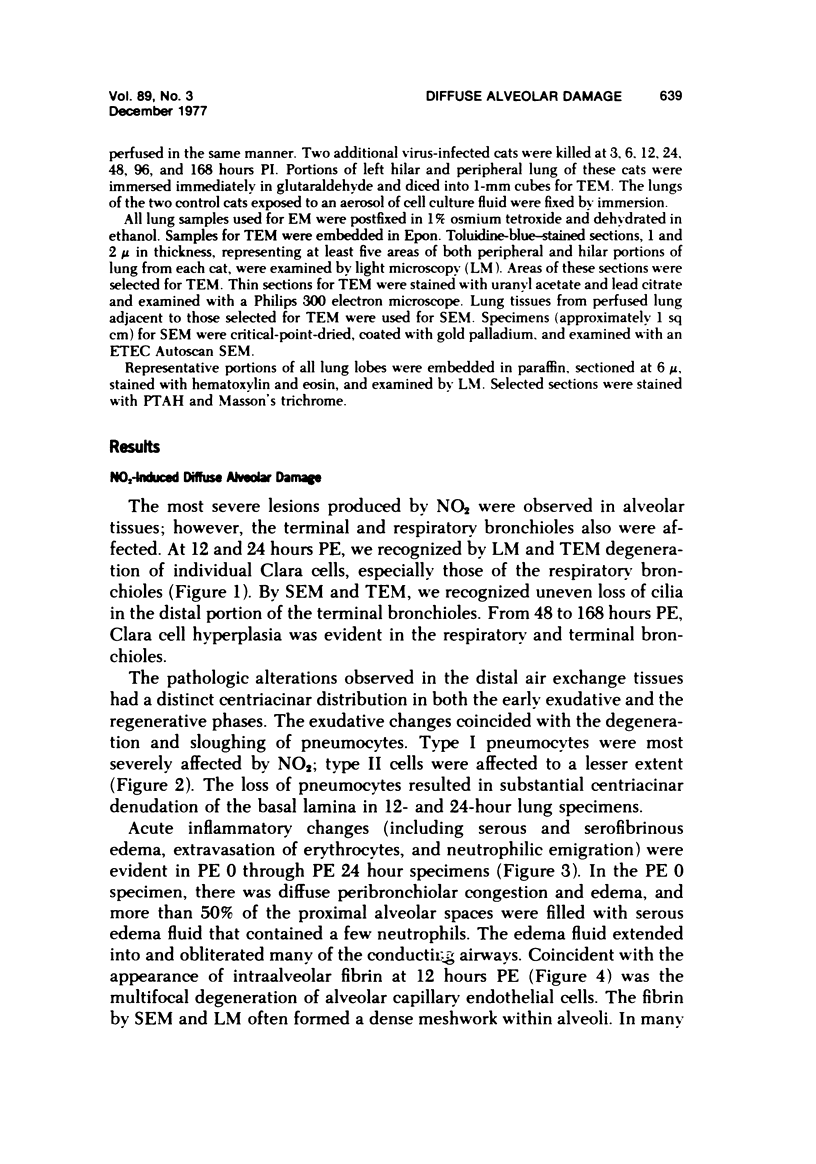
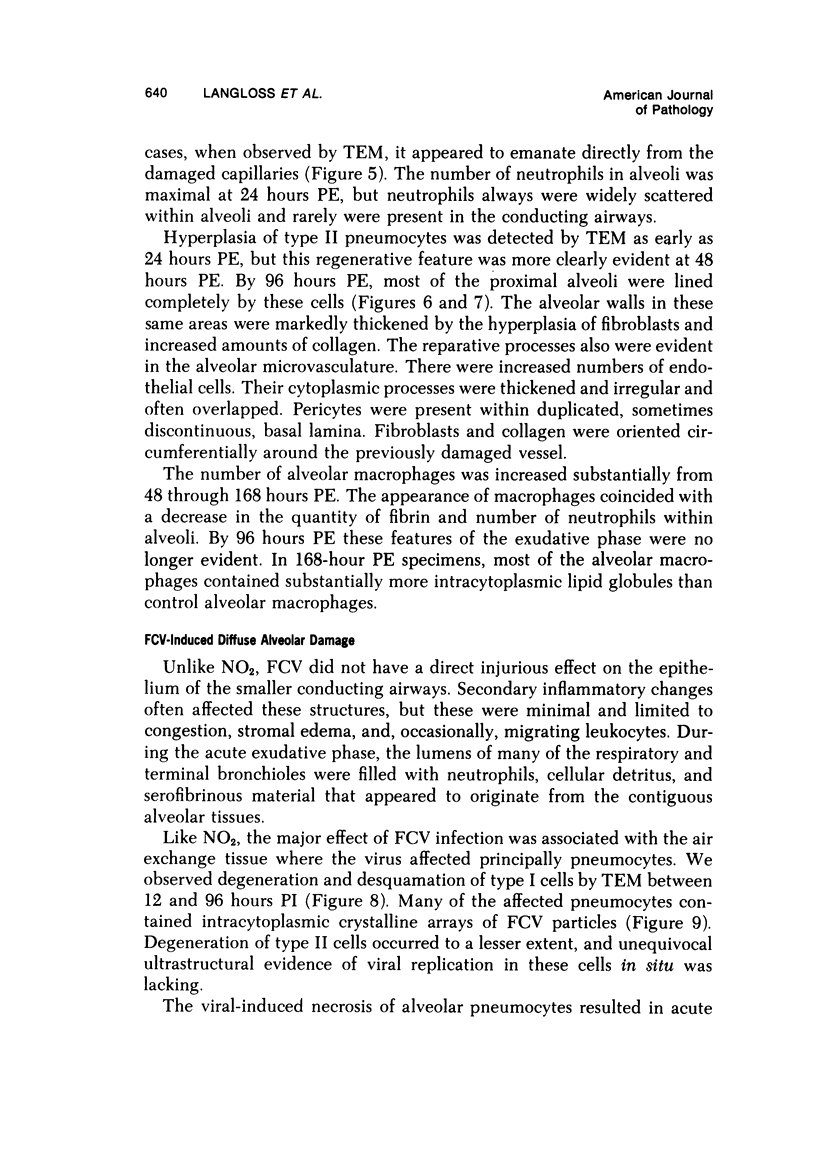
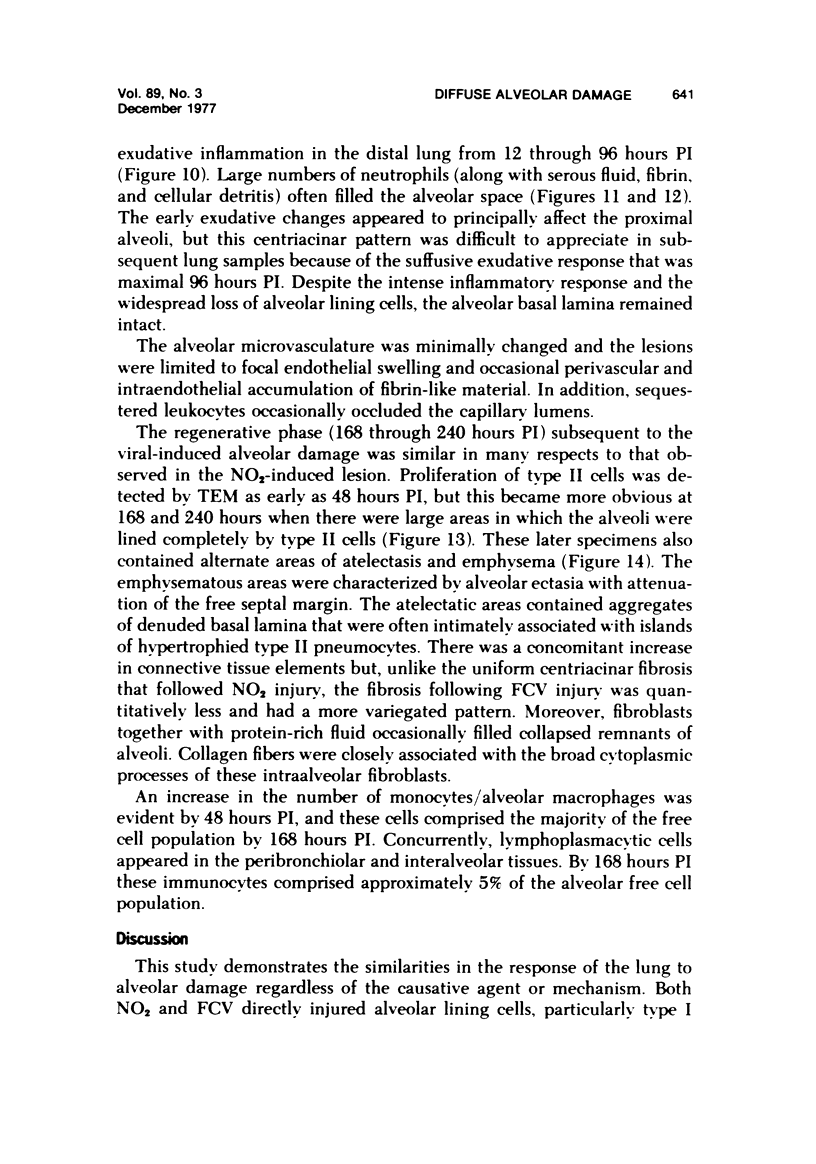
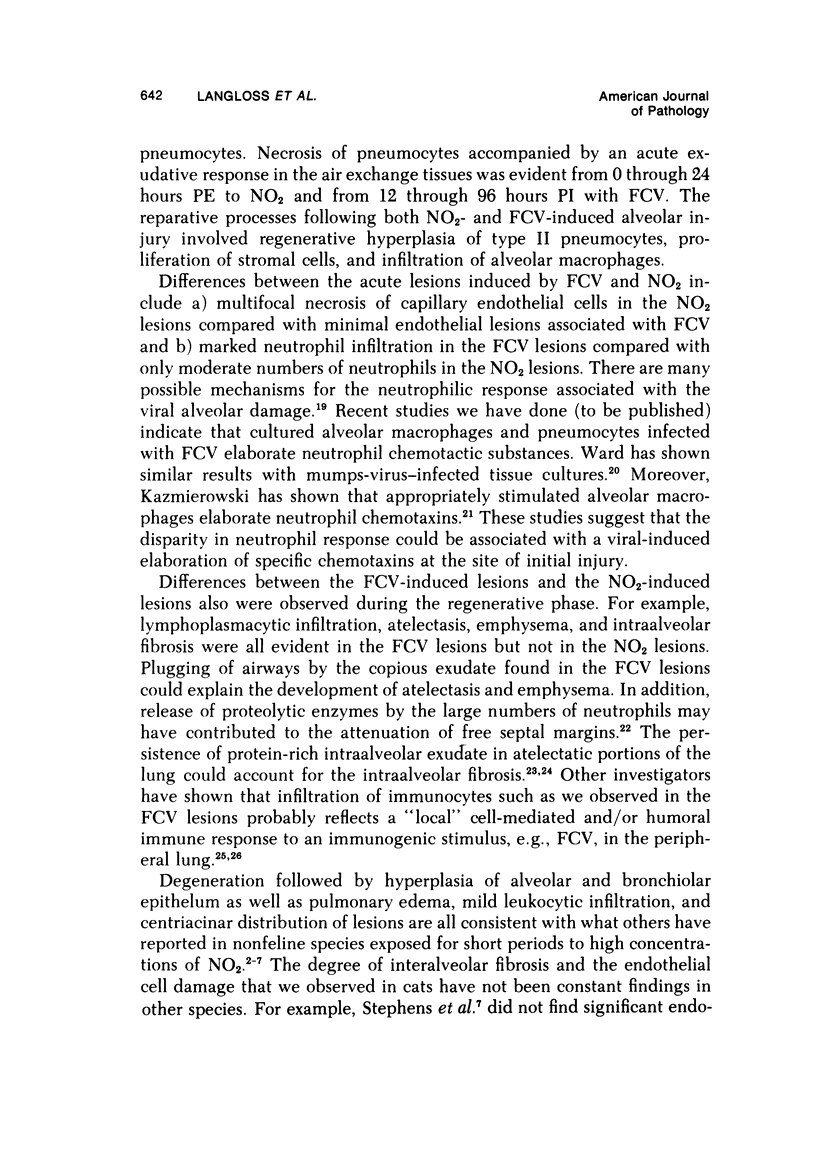
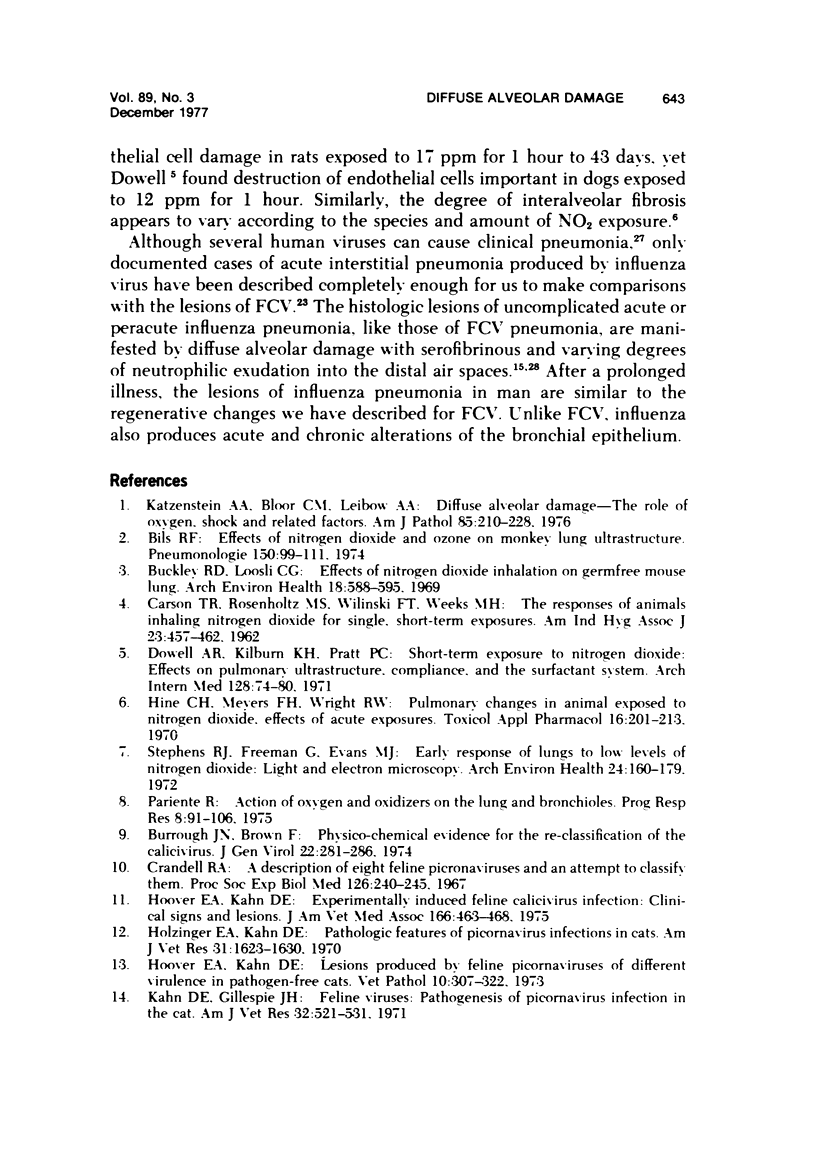
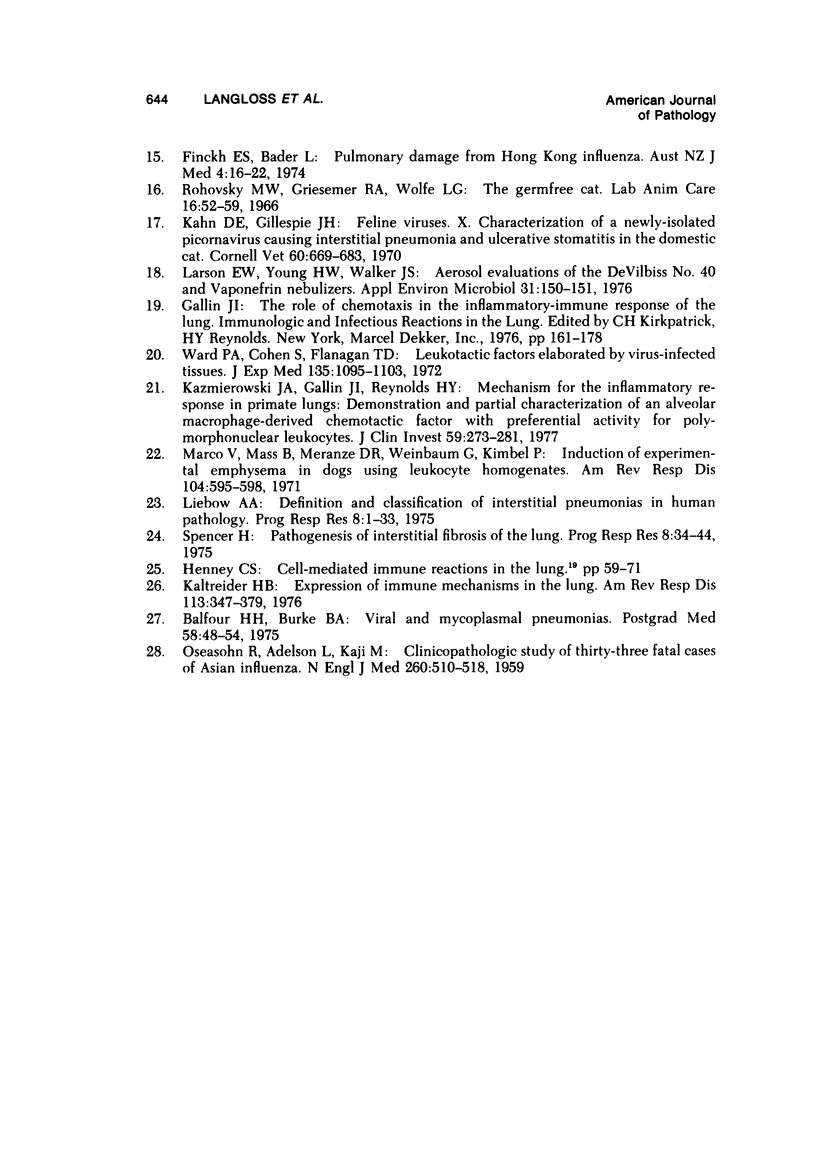
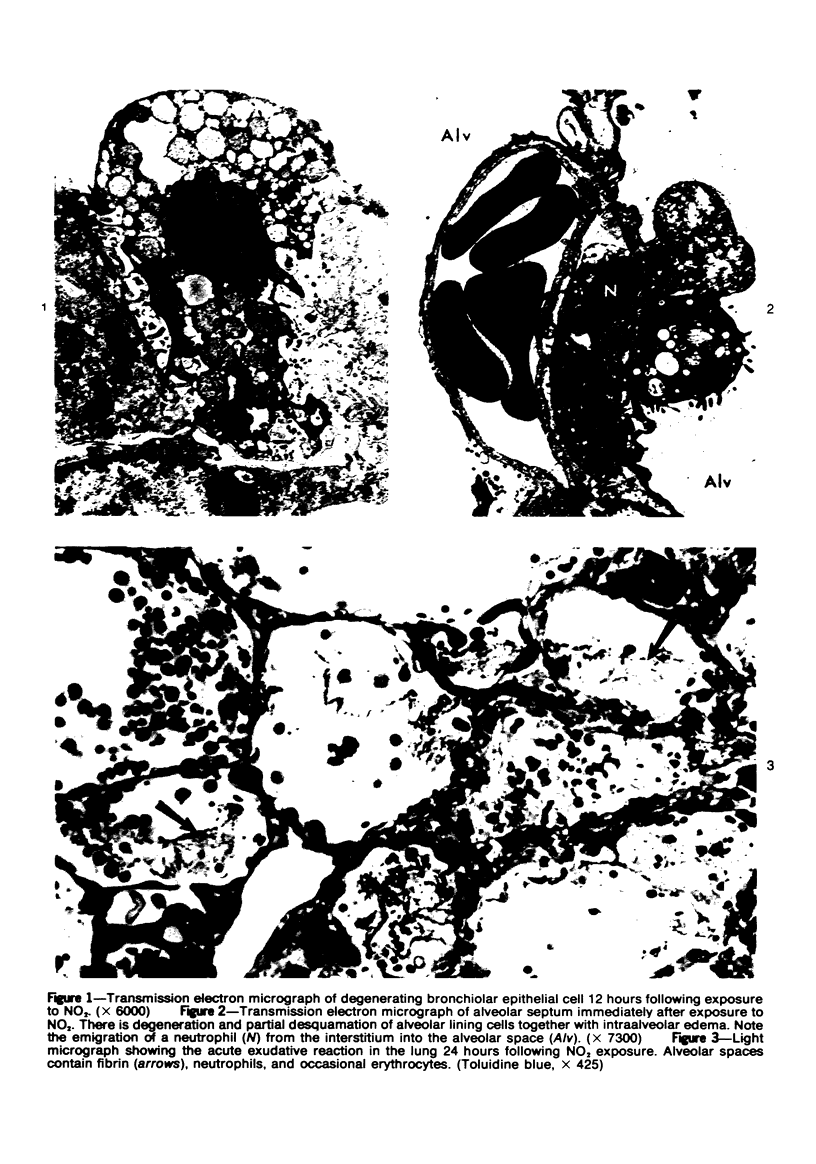
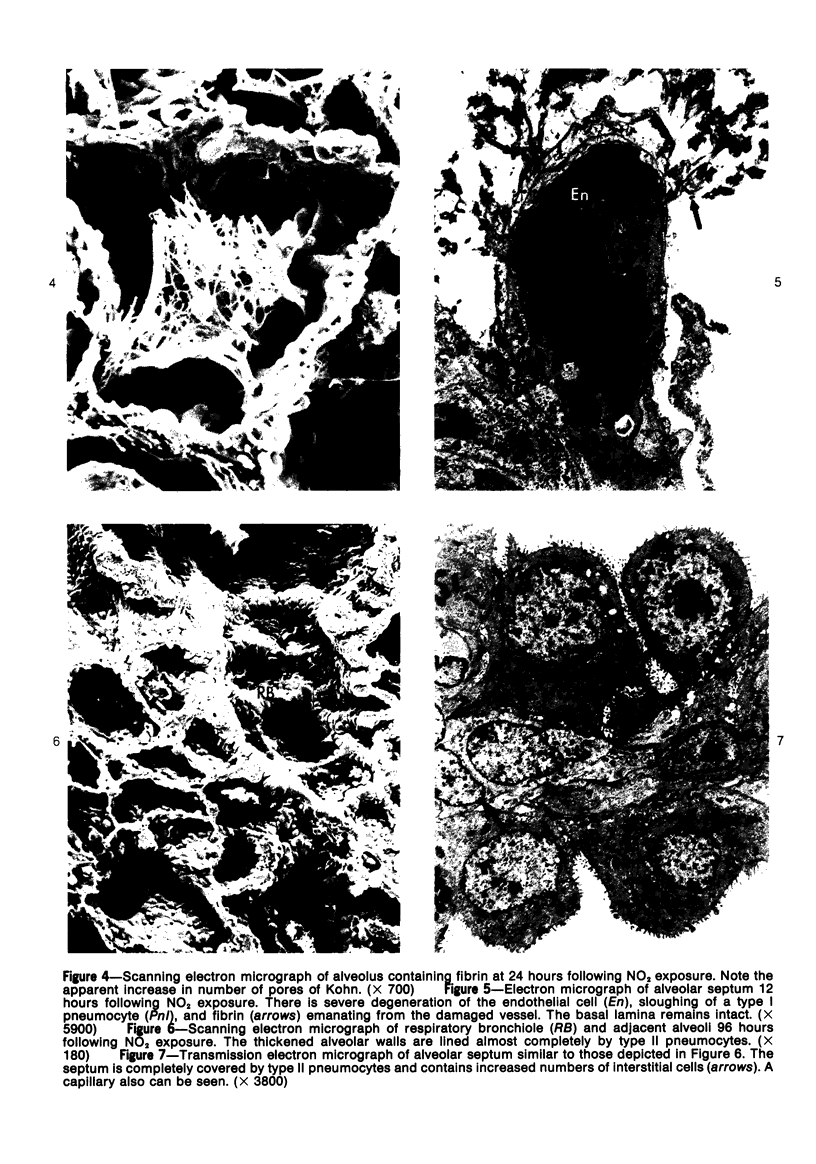
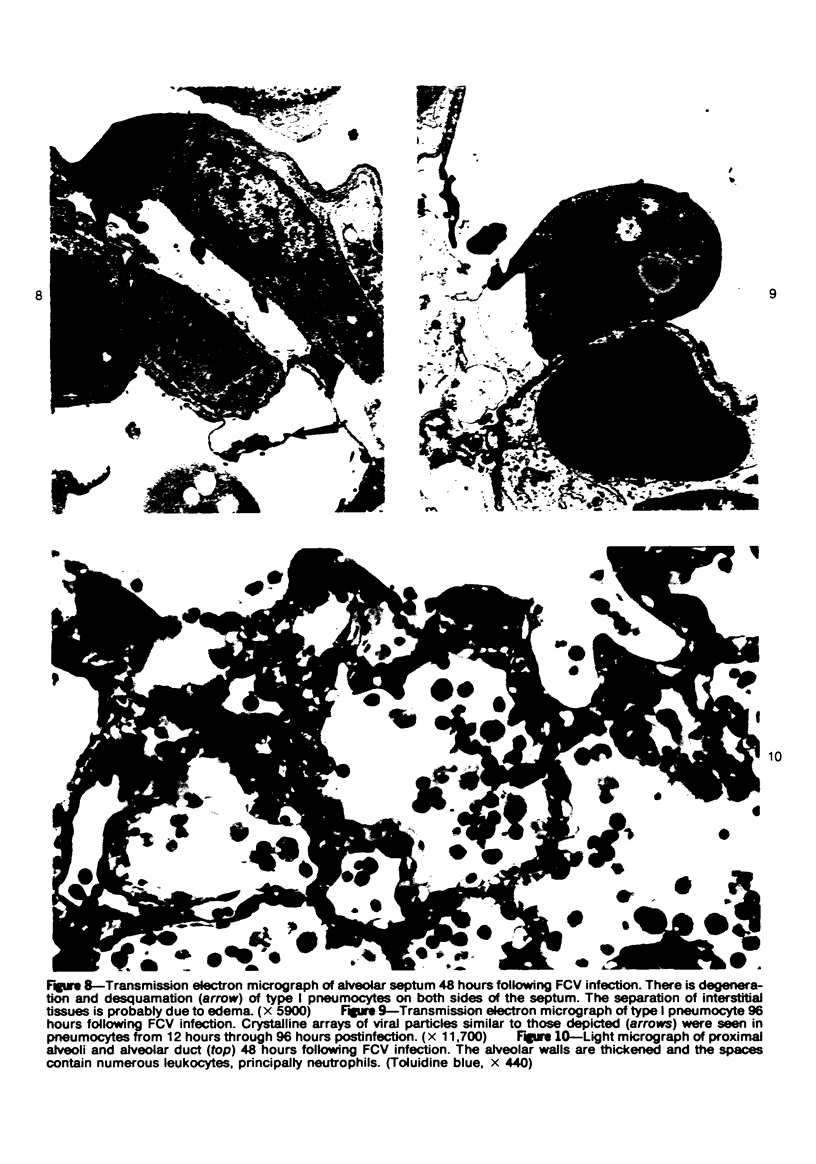
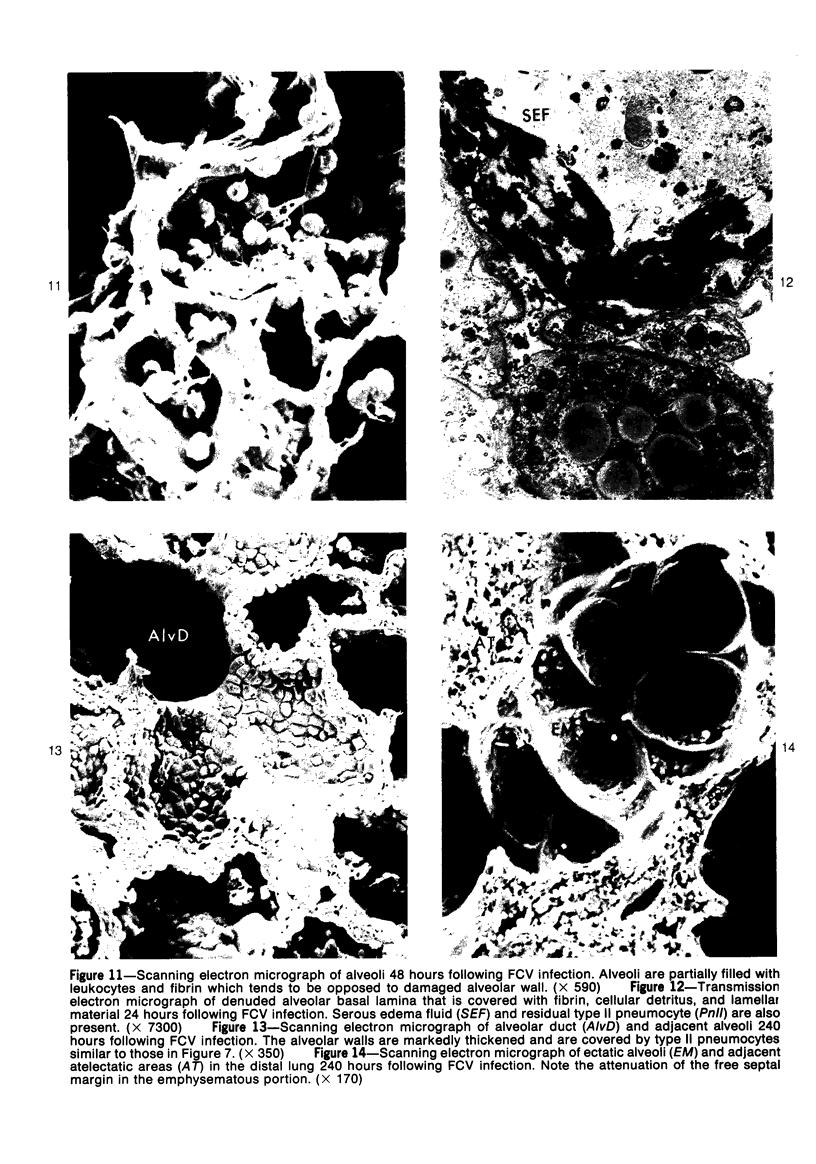
Images in this article
Selected References
These references are in PubMed. This may not be the complete list of references from this article.
- Balfour J. J., Jr, Burke B. A. Viral and mycoplasmal pneumonias: reviewing current concepts. Postgrad Med. 1975 Dec;58(7):48–54. [PubMed] [Google Scholar]
- Bils R. F. Effects of nitrogen dioxide and ozone on monkey lung ultrastructure. Pneumonologie. 1974;150(2-4):99–111. doi: 10.1007/BF02179307. [DOI] [PubMed] [Google Scholar]
- Buckley R. D., Loosli C. G. Effects of nitrogen dioxide inhalation on germfree mouse lung. Arch Environ Health. 1969 Apr;18(4):588–595. doi: 10.1080/00039896.1969.10665457. [DOI] [PubMed] [Google Scholar]
- Burroughs J. N., Brown F. Physico-chemical evidence for the re-classification of the caliciviruses. J Gen Virol. 1974 Feb;22(2):281–286. doi: 10.1099/0022-1317-22-2-281. [DOI] [PubMed] [Google Scholar]
- Crandell R. A. A description of eight feline picornaviruses and an attempt to classify them. Proc Soc Exp Biol Med. 1967 Oct;126(1):240–245. doi: 10.3181/00379727-126-32412. [DOI] [PubMed] [Google Scholar]
- Dowell A. R., Kilburn K. H., Pratt P. C. Short-term exposure to nitrogen dioxide. Effects on pulmonary ultrastructure, compliance, and the surfactant system. Arch Intern Med. 1971 Jul;128(1):74–80. [PubMed] [Google Scholar]
- Hine C. H., Meyers F. H., Wright R. W. Pulmonary changes in animals exposed to nitrogen dioxide, effects of acute exposures. Toxicol Appl Pharmacol. 1970 Jan;16(1):201–213. doi: 10.1016/0041-008x(70)90177-8. [DOI] [PubMed] [Google Scholar]
- Holzinger E. A., Kahn D. E. Pathologic features of picornavirus infections in cats. Am J Vet Res. 1970 Sep;31(9):1623–1630. [PubMed] [Google Scholar]
- Hoover E. A., Kahn D. E. Experimentally induced feline calicivirus infection: clinical signs and lesions. J Am Vet Med Assoc. 1975 Mar 1;166(5):463–468. [PubMed] [Google Scholar]
- Hoover E. A., Kahn D. E. Lesions produced by feline picornaviruses of different virulence in pathogen-free cats. Vet Pathol. 1973;10(4):307–322. doi: 10.1177/030098587301000404. [DOI] [PubMed] [Google Scholar]
- Kahn D. E., Gillespie J. H. Feline viruses. X. Characterization of a newly-isolated picornavirus causing interstitial pneumonia and ulcerative stomatitis in the domestic cat. Cornell Vet. 1970 Oct;60(4):669–683. [PubMed] [Google Scholar]
- Kaltreider H. B. Expression of immune mechanisms in the lung. Am Rev Respir Dis. 1976 Mar;113(3):347–379. doi: 10.1164/arrd.1976.113.3.347. [DOI] [PubMed] [Google Scholar]
- Kazmierowski J. A., Gallin J. I., Reynolds H. Y. Mechanism for the inflammatory response in primate lungs. Demonstration and partial characterization of an alveolar macrophage-derived chemotactic factor with preferential activity for polymorphonuclear leukocytes. J Clin Invest. 1977 Feb;59(2):273–281. doi: 10.1172/JCI108638. [DOI] [PMC free article] [PubMed] [Google Scholar]
- Larson E. W., Young H. W., Walker J. S. Aerosol evaluations of the DeVilbiss No. 40 and Vaponefrin nebulizers. Appl Environ Microbiol. 1976 Jan;31(1):150–151. doi: 10.1128/aem.31.1.150-151.1976. [DOI] [PMC free article] [PubMed] [Google Scholar]
- Marco V., Mass B., Meranze D. R., Weinbaum G., Kimbel P. Induction of experimental emphysema in dogs using leukocyte homogenates. Am Rev Respir Dis. 1971 Oct;104(4):595–598. doi: 10.1164/arrd.1971.104.4.595. [DOI] [PubMed] [Google Scholar]
- OSEASOHN R., ADELSON L., KAJI M. Clinicopathologic study of thirty-three fatal cases of Asian influenza. N Engl J Med. 1959 Mar 12;260(11):509–518. doi: 10.1056/NEJM195903122601101. [DOI] [PubMed] [Google Scholar]
- Rohovsky M. W., Griesemer R. A., Wolfe L. G. The germfree cat. Lab Anim Care. 1966 Feb;16(1):52–59. [PubMed] [Google Scholar]
- Stephens R. J., Freeman G., Evans M. J. Early response of lungs to low levels of nitrogen dioxide. Light and electron microscopy. Arch Environ Health. 1972 Mar;24(3):160–179. doi: 10.1080/00039896.1972.10666066. [DOI] [PubMed] [Google Scholar]
- Ward P. A., Cohen S., Flanagan T. D. Leukotactic factors elaborated by virus-infected tissues. J Exp Med. 1972 May 1;135(5):1095–1103. doi: 10.1084/jem.135.5.1095. [DOI] [PMC free article] [PubMed] [Google Scholar]



